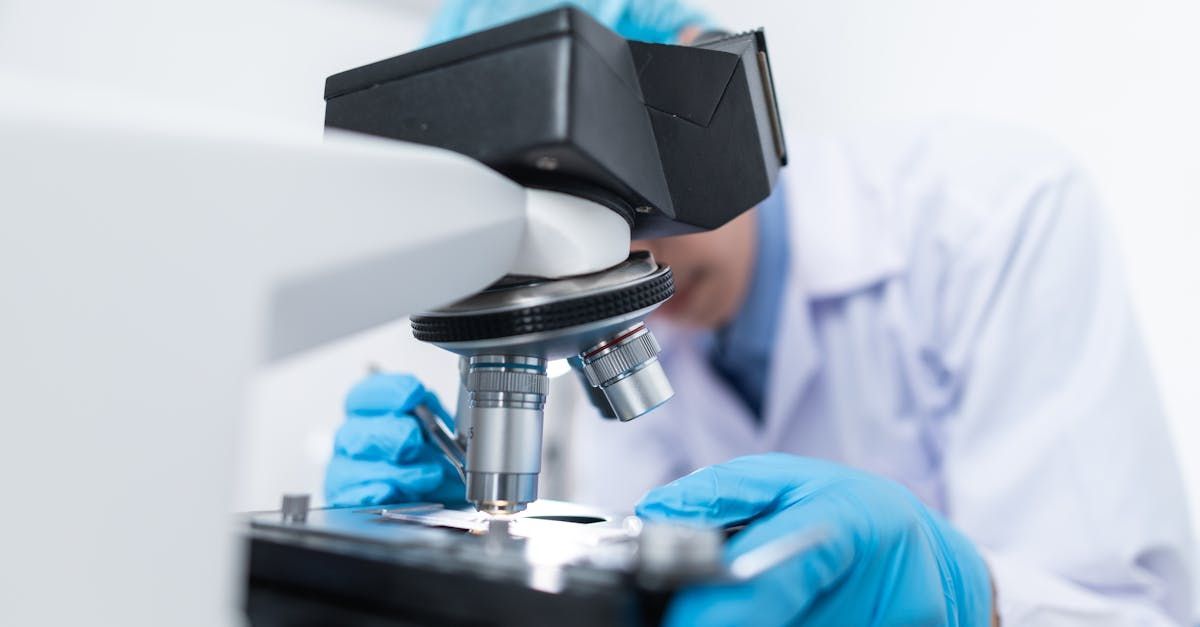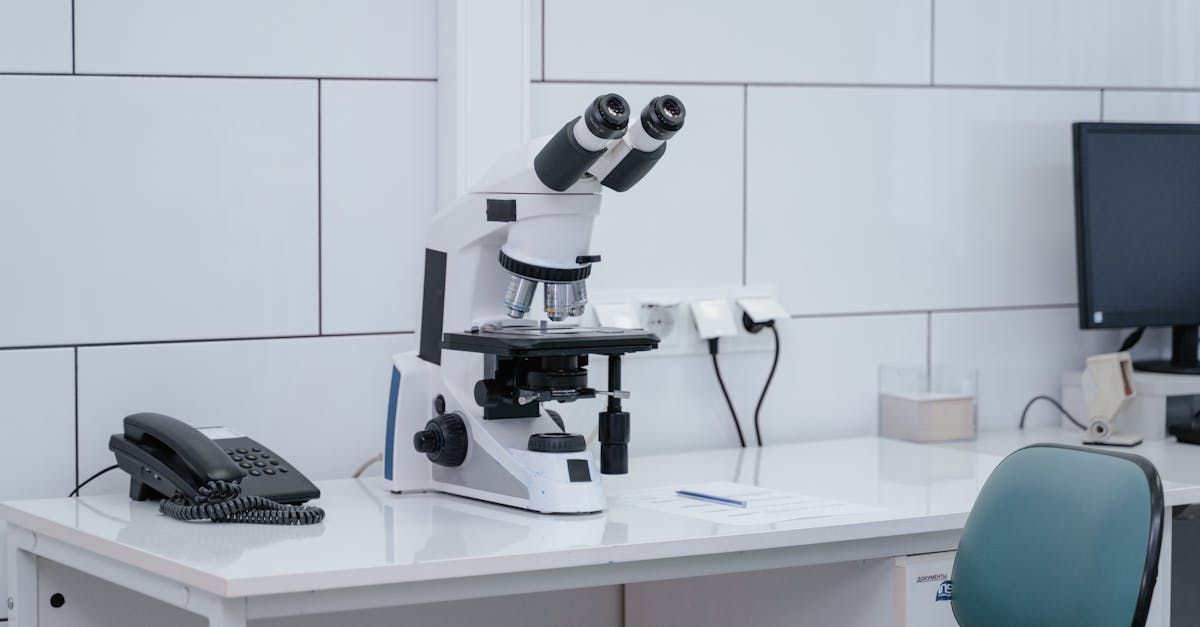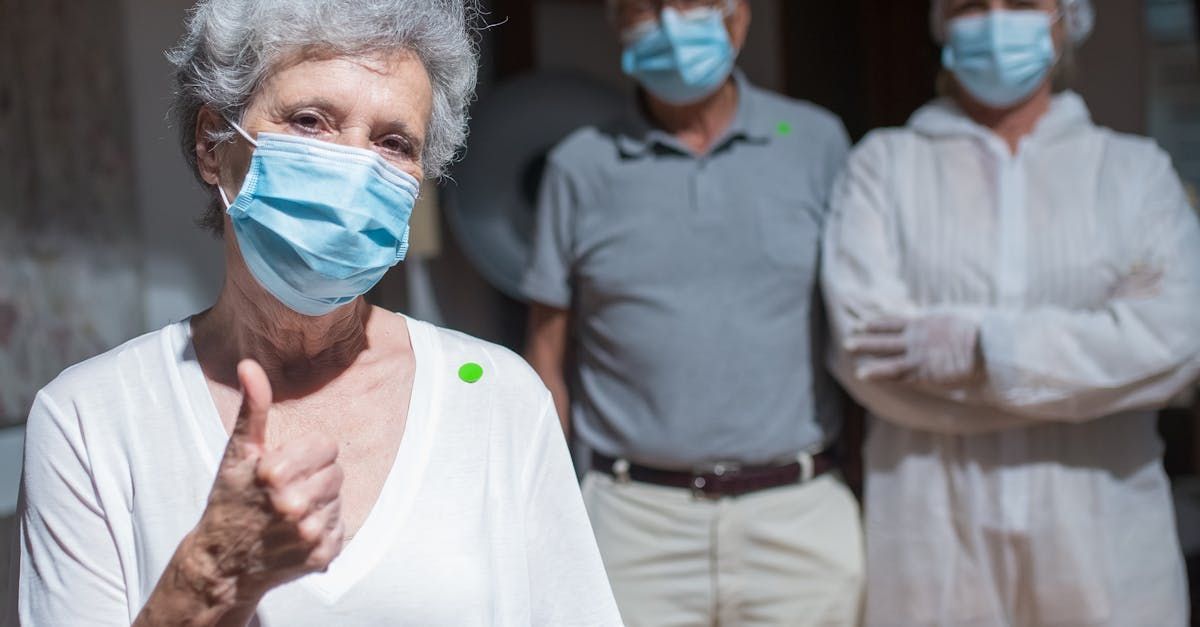Wearable Technology in Clinical Research
Wearable technology has become an integral part of our daily lives, seamlessly blending into routines to track fitness, monitor health, and enhance overall well-being. From smartwatches that remind us to stay active to advanced fitness trackers that measure our sleep patterns, these devices provide a wealth of data that can inform personal health decisions. However, beyond personal use, wearable technology is making significant strides in the field of clinical research, revolutionizing how studies are conducted and how data is collected.
In clinical research, the ability to gather continuous, real-time data is invaluable. Traditional methods of data collection, often reliant on periodic visits to research sites and self-reported information, can be cumbersome and prone to inaccuracies. Wearable devices offer a solution to these challenges by providing a steady stream of objective data, collected in real-world settings, and often without the need for direct patient intervention. This not only enhances the accuracy of data but also increases patient engagement and adherence, as participants can go about their daily lives with minimal disruption.
The integration of wearable technology into clinical research is transforming the landscape of medical studies. It enables remote monitoring, reduces the need for in-person visits, and facilitates early detection of health issues, leading to timely interventions. As technology advances, the potential applications of wearables in clinical research continue to expand, promising more efficient, comprehensive, and patient-centric studies.
This blog will explore the evolution of wearable technology, its types, and benefits in clinical research, provide case studies and examples, address challenges and limitations, and look at future trends and innovations. By understanding the profound impact wearable technology has on clinical research, we can better appreciate its role in shaping the future of healthcare.
The Evolution of Wearable Technology
The journey of wearable technology from simple fitness trackers to sophisticated health monitoring devices has been marked by rapid advancements in engineering, computing, and biotechnology. Understanding this evolution provides valuable context for appreciating how these innovations are transforming clinical research today.
Early Beginnings: Simple Trackers
The earliest wearable technology devices were basic pedometers that counted steps. Introduced in the mid-20th century, these devices were primarily mechanical and provided limited functionality. Despite their simplicity, they laid the groundwork for a burgeoning interest in personal health monitoring.
The Rise of Fitness Trackers
The advent of digital technology in the late 1990s and early 2000s revolutionized wearable devices. Fitness trackers such as the Fitbit, launched in 2009, became household names. These devices could not only count steps but also monitor other metrics like distance traveled, calories burned, and sleep patterns. Equipped with accelerometers and gyroscopes, these trackers offered more detailed and accurate data than their mechanical predecessors.
Integration with Smartphones
The integration of wearable devices with smartphones marked a significant leap forward. Connectivity through Bluetooth allowed wearables to sync with mobile apps, enabling users to access detailed reports and trends over time. This connectivity also opened the door for integrating wearables with other health apps and platforms, enhancing their utility and versatility.
Advanced Health Monitoring
As sensor technology advanced, wearables evolved from fitness trackers to comprehensive health monitoring devices. Modern smartwatches and fitness bands now include a variety of sensors capable of monitoring heart rate, blood oxygen levels, electrocardiograms (ECGs), and even detecting falls. Brands like Apple, Garmin, and Samsung have incorporated these advanced features into their products, making health monitoring more accessible to the general public.
Specialized Medical Wearables
Beyond consumer-grade devices, the development of specialized medical wearables has further expanded the potential of wearable technology in healthcare. Devices such as continuous glucose monitors (CGMs) for diabetes management, wearable ECG monitors for cardiac care, and smart patches for drug delivery exemplify the application of wearables in specific medical contexts. These devices provide continuous monitoring and real-time feedback, enabling more precise and personalized healthcare management.
Integration with Artificial Intelligence and Big Data
The integration of wearable technology with artificial intelligence (AI) and big data analytics represents the latest frontier in this evolution. Wearables generate vast amounts of data that, when analyzed using AI algorithms, can provide insights into health trends, predict medical events, and personalize treatment plans. This integration enhances the ability of wearables to not only monitor health but also to proactively manage and improve it.
Wearables in Clinical Research
In clinical research, the evolution of wearable technology has had a transformative impact. Early clinical trials relied heavily on patient-reported outcomes and periodic health assessments. Today, wearables provide continuous, objective data that enhances the accuracy and reliability of clinical studies. They allow for the monitoring of participants in real-time, capturing fluctuations and trends that might be missed in traditional setups.
Moreover, the ability to conduct remote monitoring through wearables has facilitated the rise of decentralized clinical trials (DCTs), making it easier to recruit diverse participant populations and reduce the burden on participants. This has been particularly valuable during the COVID-19 pandemic, where in-person visits were limited.
The Future of Wearable Technology
Looking ahead, the evolution of wearable technology shows no signs of slowing down. Emerging trends include the development of more sophisticated sensors, the integration of wearable devices with telemedicine platforms, and the use of blockchain technology to secure health data. These advancements promise to further enhance the role of wearables in both personal health management and clinical research.
In conclusion, the evolution of wearable technology from simple step counters to advanced health monitoring devices has been driven by continuous innovation. These advancements have significantly impacted clinical research by providing more accurate, real-time data and enabling remote monitoring. As wearable technology continues to evolve, its role in clinical research is likely to expand, offering new opportunities for improving health outcomes and advancing medical knowledge.
Types of Wearable Devices Used in Clinical Research
Wearable devices have become integral to modern clinical research, offering a variety of tools to monitor and collect health data in real-time. These devices range from fitness trackers and smartwatches to specialized medical wearables designed for specific health conditions. Here, we explore the different types of wearable devices commonly used in clinical research and their applications.
Fitness Trackers
Overview: Fitness trackers, such as those from Fitbit, Garmin, and Xiaomi, are some of the most widely used wearable devices. These devices are designed to monitor general physical activity, including steps taken, distance traveled, calories burned, and sleep patterns.
Applications in Clinical Research: Fitness trackers are often used in studies related to physical activity, weight management, and lifestyle interventions. They provide valuable data on participants' daily activity levels, helping researchers understand the impact of physical activity on health outcomes.
Example Study: A clinical trial investigating the effects of a lifestyle intervention on weight loss and metabolic health might use fitness trackers to monitor participants' daily physical activity and correlate it with changes in body weight and metabolic markers.
Smartwatches
Overview: Smartwatches, such as the Apple Watch, Samsung Galaxy Watch, and Wear OS devices, offer more advanced features than basic fitness trackers. They include sensors for heart rate monitoring, GPS tracking, and sometimes even electrocardiograms (ECGs).
Applications in Clinical Research: Smartwatches are used in a wide range of studies, from cardiovascular health and fitness to mental health and sleep research. Their ability to continuously monitor heart rate and other vital signs makes them particularly useful for longitudinal studies.
Example Study: A study examining the relationship between sleep quality and cardiovascular health might use smartwatches to monitor participants' sleep patterns and heart rate variability, providing insights into how poor sleep affects heart health over time.
Continuous Glucose Monitors (CGMs)
Overview: Continuous glucose monitors, such as those from Dexcom, Abbott's FreeStyle Libre, and Medtronic, are specialized devices used primarily for managing diabetes. These devices continuously measure glucose levels in the interstitial fluid, providing real-time data on blood sugar fluctuations.
Applications in Clinical Research: CGMs are essential for studies on diabetes management, glycemic control, and the effects of various treatments on blood glucose levels. They help researchers understand how different interventions, such as medications or lifestyle changes, impact glucose regulation.
Example Study: A clinical trial testing a new diabetes medication might use CGMs to monitor participants' glucose levels throughout the study, providing detailed data on the drug's efficacy in maintaining glycemic control.
Wearable ECG Monitors
Overview: Wearable ECG monitors, such as the KardiaMobile by AliveCor and Zio Patch by iRhythm, are designed to record electrical activity of the heart. These devices can detect irregular heart rhythms and provide detailed ECG readings over extended periods.
Applications in Clinical Research: Wearable ECG monitors are used in cardiovascular research, particularly in studies related to arrhythmias, atrial fibrillation, and heart rate variability. They offer continuous monitoring, making it possible to detect transient cardiac events that might be missed in a clinical setting.
Example Study: A study investigating the effects of a new anti-arrhythmic drug might use wearable ECG monitors to track participants' heart rhythms, assessing the drug's effectiveness in reducing the frequency and severity of arrhythmic episodes.
Smart Patches
Overview: Smart patches, such as the VitalPatch by VitalConnect and the TempTraq temperature monitor, are adhesive devices that stick to the skin and continuously monitor various health metrics, including heart rate, respiratory rate, temperature, and activity levels.
Applications in Clinical Research: Smart patches are versatile tools used in studies requiring continuous monitoring of multiple physiological parameters. They are particularly useful in remote patient monitoring and studies involving participants with chronic conditions.
Example Study: A clinical trial examining the impact of a new respiratory treatment might use smart patches to monitor changes in respiratory rate and heart rate, providing comprehensive data on the treatment's effectiveness and safety.
Wearable Blood Pressure Monitors
Overview: Wearable blood pressure monitors, such as the Omron HeartGuide and the Aktiia bracelet, offer a convenient way to measure blood pressure continuously throughout the day. These devices use oscillometric or photoplethysmographic methods to estimate blood pressure.
Applications in Clinical Research: Wearable blood pressure monitors are used in hypertension studies, cardiovascular research, and investigations into the effects of lifestyle interventions on blood pressure. They provide continuous data, capturing variations that might be missed with traditional cuff-based measurements.
Example Study: A study exploring the impact of a dietary intervention on blood pressure might use wearable blood pressure monitors to track participants' blood pressure changes in real-time, correlating these changes with dietary habits.
Activity Trackers with Environmental Sensors
Overview: Some advanced activity trackers, such as the Fitbit Charge 4 and the Oura Ring, include environmental sensors that measure factors like ambient temperature, light exposure, and air quality. These sensors provide additional context to physical activity and health data.
Applications in Clinical Research: Activity trackers with environmental sensors are used in studies examining the effects of environmental factors on health and well-being. They help researchers understand how external conditions influence physical activity, sleep, and overall health.
Example Study: A study investigating the impact of air quality on respiratory health might use activity trackers with environmental sensors to monitor participants' exposure to pollutants and correlate it with respiratory symptoms and activity levels.
In conclusion, wearable devices have become indispensable tools in clinical research, offering diverse applications across various health domains. From fitness trackers and smartwatches to specialized medical wearables, these devices provide continuous, real-time data that enhances the accuracy and reliability of clinical studies. As wearable technology continues to evolve, its role in clinical research will likely expand, providing new opportunities for improving health outcomes and advancing medical knowledge.
Benefits of Wearable Technology in Clinical Research
The integration of wearable technology into clinical research has revolutionized how data is collected, analyzed, and utilized. These devices offer numerous advantages, enhancing the quality and scope of clinical studies while improving participant experience and engagement. Here, we delve into the key benefits of using wearable technology in clinical research.
Continuous and Real-Time Data Collection
Overview: Wearable devices enable continuous and real-time monitoring of various health metrics, such as heart rate, physical activity, glucose levels, and sleep patterns. This provides a comprehensive and dynamic view of participants' health status over time.
Benefits:
- Enhanced Data Accuracy: Continuous data collection reduces the reliance on self-reported data, which can be prone to recall bias and inaccuracies.
- Timely Interventions: Real-time data allows for the early detection of adverse events or health deteriorations, enabling timely medical interventions.
- Detailed Health Insights: Researchers can gain deeper insights into the patterns and trends of health metrics, leading to a better understanding of disease progression and treatment effects.
Improved Participant Engagement and Compliance
Overview: Wearable devices offer a user-friendly and non-invasive way for participants to contribute to clinical research. These devices are typically easy to wear and integrate seamlessly into daily life.
Benefits:
- Convenience: Participants can wear these devices throughout their daily activities without significant disruption, making it easier to adhere to study protocols.
- Engagement: Features such as real-time feedback, reminders, and goal-setting can motivate participants to stay engaged and compliant with study requirements.
- Reduced Dropout Rates: The ease of use and minimal burden on participants can lead to higher retention rates, ensuring that studies are completed successfully.
Enhanced Remote Monitoring Capabilities
Overview: Wearable technology facilitates remote monitoring, allowing researchers to collect data without requiring frequent in-person visits. This is particularly valuable for long-term studies or those involving participants in diverse geographic locations.
Benefits:
- Access to Diverse Populations: Remote monitoring expands the reach of clinical trials, making it possible to include participants from remote or underserved areas who might otherwise be unable to participate.
- Cost Savings: Reducing the need for physical site visits and in-person assessments can lower the overall cost of conducting clinical trials.
- Pandemic Resilience: The COVID-19 pandemic highlighted the importance of remote monitoring in maintaining research continuity during periods of social distancing and lockdowns.
Increased Data Granularity and Volume
Overview: Wearable devices generate large volumes of granular data, capturing minute-by-minute variations in health metrics. This high-resolution data is invaluable for detailed analyses.
Benefits:
- Rich Data Sets: The vast amount of data collected allows for more robust statistical analyses and the identification of subtle trends and correlations.
- Personalized Insights: Researchers can analyze individual-level data to provide personalized insights and tailor interventions to specific participant needs.
- Longitudinal Studies: Wearable devices are ideal for longitudinal studies, as they can track changes over extended periods, providing insights into long-term health outcomes.
Real-World Evidence Collection
Overview: Wearable technology enables the collection of real-world evidence (RWE), reflecting how participants respond to treatments and interventions in their everyday environments, outside of controlled clinical settings.
Benefits:
- Ecological Validity: RWE provides a more accurate representation of how interventions work in real-life conditions, enhancing the ecological validity of clinical trials.
- Broader Application: Data collected in real-world settings can be used to inform public health strategies and healthcare policies, bridging the gap between clinical research and everyday practice.
- Diverse Contexts: Wearables capture data across various contexts and activities, offering insights into how different factors, such as stress, exercise, and sleep, influence health outcomes.
Facilitating Adaptive and Decentralized Trials
Overview: Wearable devices are crucial for conducting adaptive and decentralized clinical trials, which offer greater flexibility and efficiency compared to traditional trial designs.
Benefits:
- Adaptive Designs: Continuous data from wearables can be used to adjust trial protocols in real-time, such as modifying treatment dosages or adapting inclusion criteria based on interim results.
- Decentralized Trials: Wearables support decentralized trial models by enabling remote data collection and monitoring, reducing the need for centralized clinical sites.
- Participant-Centered Research: These trial designs are more participant-friendly, accommodating individual needs and preferences, and potentially leading to higher engagement and retention rates.
Accelerated Research Timelines
Overview: The efficiency and convenience offered by wearable technology can accelerate the pace of clinical research, from recruitment and data collection to analysis and reporting.
Benefits:
- Faster Recruitment: Wearables can simplify the recruitment process by allowing remote enrollment and screening, speeding up the initiation of trials.
- Streamlined Data Collection: Automated data collection reduces the time and effort required for manual data entry and monitoring.
- Quick Analysis: Real-time data transmission enables rapid analysis and decision-making, potentially shortening the duration of clinical trials.
In conclusion, wearable technology offers a multitude of benefits in clinical research, enhancing data collection, participant engagement, and study efficiency. By leveraging these devices, researchers can conduct more accurate, comprehensive, and participant-friendly studies, ultimately advancing medical knowledge and improving health outcomes. As wearable technology continues to evolve, its role in clinical research will undoubtedly expand, paving the way for innovative and impactful research methodologies.
Case Studies and Examples
To understand the transformative impact of wearable technology in clinical research, it is helpful to examine specific case studies and examples where these devices have been successfully implemented. These cases highlight the diverse applications of wearables and the significant benefits they bring to clinical trials.
Case Study 1: Apple Heart Study
Overview: The Apple Heart Study, conducted by Stanford University in collaboration with Apple, aimed to determine if the Apple Watch could accurately detect atrial fibrillation (AFib), a common but often undiagnosed heart rhythm disorder.
Implementation:
- Participants used Apple Watches to continuously monitor their heart rates.
- If an irregular rhythm suggestive of AFib was detected, participants were notified through the watch and a corresponding mobile app.
- Participants were then instructed to schedule a telemedicine visit with a study doctor and were sent an electrocardiogram (ECG) patch for further monitoring.
Outcomes:
- The study successfully enrolled over 400,000 participants, showcasing the scalability and accessibility of using wearables in clinical research.
- Results demonstrated that the Apple Watch could accurately detect AFib, with positive notifications leading to clinically confirmed AFib in many cases.
- The study highlighted the potential for wearable technology to enable early detection of health conditions and facilitate timely medical interventions.
Case Study 2: Parkinson’s Disease Study with Verily's Study Watch
Overview: Verily, Alphabet's life sciences research organization, conducted a study using its Study Watch to monitor patients with Parkinson’s disease. The goal was to gather comprehensive data on the disease's progression and symptoms.
Implementation:
- Participants wore the Study Watch, which collected continuous data on motor function, heart rate, and physical activity.
- The watch featured sensors specifically designed to capture subtle changes in movement and other health metrics relevant to Parkinson’s disease.
- Data from the watches were transmitted to researchers in real time for analysis.
Outcomes:
- The continuous, high-resolution data collected provided detailed insights into the daily lives and health fluctuations of patients with Parkinson’s disease.
- Researchers were able to identify patterns and correlations that were not possible with traditional intermittent assessments.
- The study demonstrated the feasibility of using wearables to monitor chronic conditions continuously and unobtrusively, improving disease management and treatment strategies.
Case Study 3: REMOTE Trial by Pfizer
Overview: Pfizer’s REMOTE trial was one of the first fully decentralized clinical trials, focusing on patients with overactive bladder (OAB). The study utilized wearable devices and digital tools to conduct the trial without traditional clinical site visits.
Implementation:
- Participants used a combination of mobile health apps and wearable devices to track symptoms, medication adherence, and daily activities.
- Data were collected remotely and automatically transmitted to researchers, reducing the need for in-person visits.
- Participants received regular virtual consultations to discuss their symptoms and treatment progress.
Outcomes:
- The trial demonstrated that decentralized models using wearable technology could maintain data quality and participant engagement.
- Participants reported high satisfaction with the convenience and flexibility of the study design.
- The study provided valuable insights into the potential of wearable devices to conduct large-scale, remote clinical trials efficiently.
Case Study 4: Digital Diabetes Study with Dexcom G6
Overview: A study conducted to evaluate the effectiveness of continuous glucose monitoring (CGM) systems, specifically the Dexcom G6, in managing type 1 and type 2 diabetes.
Implementation:
- Participants wore the Dexcom G6 CGM device, which continuously monitored their glucose levels and provided real-time feedback through a mobile app.
- Data on glucose trends, highs, and lows were collected and shared with researchers and healthcare providers.
- The study also included telehealth consultations to adjust treatment plans based on CGM data.
Outcomes:
- The continuous monitoring allowed participants to manage their diabetes more effectively by providing real-time insights into how their daily activities and meals affected their glucose levels.
- Researchers were able to analyze comprehensive glucose data, leading to improved understanding and management of diabetes.
- The study demonstrated the significant benefits of CGM systems in enhancing diabetes care and supporting remote patient management.
Case Study 5: FitBit and Weight Loss Interventions
Overview: A study aimed at evaluating the effectiveness of using FitBit devices to support weight loss interventions among overweight and obese individuals.
Implementation:
- Participants were provided with FitBit devices to track their physical activity, heart rate, and sleep patterns.
- The study also included a mobile app that offered personalized feedback, goal-setting features, and social support through online communities.
- Data collected from the FitBit devices were used to tailor interventions and monitor progress.
Outcomes:
- Participants who used FitBit devices showed significant improvements in physical activity levels and weight loss compared to control groups.
- The real-time feedback and social support features enhanced motivation and adherence to the weight loss program.
- The study highlighted the effectiveness of integrating wearable technology with behavioral interventions to achieve health goals.
Case Study 6: WHOOP Strap in Sports Medicine Research
Overview: The WHOOP strap, a wearable device designed to monitor strain, recovery, and sleep, was used in a study involving elite athletes to understand the relationship between training load and performance.
Implementation:
- Athletes wore WHOOP straps to continuously monitor their physiological metrics, including heart rate variability, sleep quality, and recovery status.
- Data were analyzed to determine how different training intensities and recovery periods affected athletic performance and injury risk.
- Coaches and researchers used the data to optimize training programs and prevent overtraining.
Outcomes:
- The study provided detailed insights into how training loads impacted recovery and performance, allowing for more personalized and effective training regimens.
- Athletes reported improved performance and reduced injury rates due to the data-driven adjustments to their training schedules.
- The research demonstrated the value of wearable technology in sports medicine, particularly for optimizing training and recovery strategies.
These case studies exemplify the diverse applications and significant benefits of wearable technology in clinical research. From chronic disease management to large-scale decentralized trials and sports medicine, wearables have proven to be valuable tools in enhancing data collection, participant engagement, and overall study outcomes. As wearable technology continues to evolve, its integration into clinical research will likely expand, driving further innovations and improvements in healthcare.
Challenges and Limitations
While wearable technology has significantly advanced clinical research, it also presents several challenges and limitations that researchers must navigate. Understanding these issues is crucial for effectively integrating wearables into clinical trials and ensuring that the data collected is reliable and actionable.
Data Accuracy and Reliability
Sensor Limitations:
- Wearable devices rely on sensors to collect health data, but these sensors can have limitations in accuracy and consistency. Factors such as device placement, skin type, and movement can affect sensor readings, leading to potential inaccuracies.
- In some cases, the algorithms used to interpret sensor data may not be fully validated across diverse populations, which can impact the generalizability of findings.
Calibration and Standardization:
- Different wearable devices may use varying methods to measure the same health parameters, making it challenging to standardize data across studies. Lack of calibration standards can lead to discrepancies in data interpretation.
- Researchers must carefully select devices with validated accuracy and ensure proper calibration to maintain data quality.
Participant Compliance and Engagement
Adherence Issues:
- Ensuring that participants consistently wear and use their devices as instructed can be challenging. Factors such as forgetfulness, discomfort, and device maintenance can affect adherence.
- Studies have shown that adherence tends to decrease over time, particularly in long-term studies, which can lead to gaps in data collection.
Participant Burden:
- While wearables are generally designed to be user-friendly, some participants may find them cumbersome or intrusive, particularly if multiple devices are required.
- Ensuring that devices are comfortable and integrating them seamlessly into participants’ daily lives is crucial for maintaining engagement and compliance.
Data Management and Privacy
Data Overload:
- Wearable devices generate vast amounts of data, which can be overwhelming to manage and analyze. Researchers need robust data management systems to handle this influx of information effectively.
- Efficient data storage, processing, and analysis are critical to derive meaningful insights from wearable data.
Privacy Concerns:
- Wearable devices collect sensitive health information, raising concerns about data privacy and security. Ensuring that data is encrypted and stored securely is essential to protect participants’ privacy.
- Compliance with data protection regulations, such as the General Data Protection Regulation (GDPR) and the Health Insurance Portability and Accountability Act (HIPAA), is mandatory to safeguard participants' data.
Informed Consent:
- Obtaining informed consent for the use of wearable devices involves clearly explaining how data will be collected, used, and shared. Participants must understand the potential risks and benefits of using wearables in research.
- Transparent communication about data privacy and security measures is necessary to build trust and ensure ethical compliance.
Integration with Existing Systems
Compatibility Issues:
- Integrating wearable data with existing clinical systems, such as electronic health records (EHRs), can be challenging. Compatibility issues may arise due to differences in data formats and standards.
- Developing interoperable systems that can seamlessly incorporate wearable data is essential for creating a comprehensive health data ecosystem.
Technical Support:
- Providing technical support to participants and researchers is crucial to address issues related to device usage, data synchronization, and troubleshooting.
- Ensuring that participants have access to timely support can help maintain adherence and data quality.
Cost and Accessibility
Device Costs:
- High-quality wearable devices can be expensive, potentially limiting their use in large-scale studies or among economically disadvantaged populations.
- Budget constraints may affect the selection of devices and the scale of wearable integration in clinical trials.
Accessibility Barriers:
- Not all participants may have equal access to the technology required for wearable devices, such as smartphones or internet connectivity. This digital divide can lead to disparities in participation and data collection.
- Addressing accessibility issues by providing necessary devices and support to participants is crucial for inclusive research.
Ethical Considerations
Informed Consent:
- The process of obtaining informed consent for wearable device use must be thorough, ensuring that participants fully understand how their data will be used and the implications of continuous monitoring.
- Researchers must address potential concerns about data misuse and ensure that participants feel comfortable with the level of surveillance involved.
Data Ownership:
- Clarifying data ownership and usage rights is essential to address ethical concerns. Participants should be informed about who owns the data and how it will be used in the future.
- Transparent policies regarding data sharing and secondary use are necessary to maintain ethical standards.
Bias and Inclusivity:
- Ensuring that wearable devices are validated across diverse populations is crucial to avoid bias in data collection and analysis. Differences in skin tone, body types, and activity levels can affect the performance of wearables.
- Researchers must strive to include diverse participant groups to ensure that findings are generalizable and applicable to all populations.
In conclusion, while wearable technology holds immense potential for advancing clinical research, it is essential to address the associated challenges and limitations. By ensuring data accuracy, maintaining participant engagement, managing data effectively, integrating systems seamlessly, and upholding ethical standards, researchers can harness the full potential of wearable devices to enhance the quality and impact of clinical trials.
Future Trends and Innovations
The landscape of wearable technology in clinical research is rapidly evolving, driven by continuous advancements in technology and an increasing emphasis on personalized and precision medicine. Here, we explore some of the emerging trends and innovations that are poised to shape the future of wearable devices in clinical research.
Advanced Sensor Technologies
Multifunctional Sensors:
- Future wearable devices will incorporate multifunctional sensors capable of monitoring a wide range of physiological parameters simultaneously. These sensors can track vital signs such as heart rate, blood pressure, respiratory rate, and blood oxygen levels, providing a comprehensive health overview.
- Innovations in nanotechnology and flexible electronics will enable the development of ultra-thin, skin-like sensors that can be comfortably worn for extended periods.
Biochemical Sensing:
- The next generation of wearables will include biochemical sensors that can analyze sweat, interstitial fluid, and other bodily fluids for biomarkers. These sensors will enable real-time monitoring of glucose levels, hydration status, electrolyte balance, and even stress hormones.
- Biochemical sensing will facilitate early detection of metabolic disorders, dehydration, and other health conditions, allowing for timely interventions.
Integration with Artificial Intelligence and Machine Learning
Predictive Analytics:
- Integrating AI and machine learning with wearable data will enhance predictive analytics, enabling early identification of health issues and personalized treatment plans. Machine learning algorithms can analyze patterns in wearable data to predict events such as heart attacks, seizures, or exacerbations of chronic conditions.
- Personalized health insights derived from AI can empower individuals to make informed decisions about their health and lifestyle.
Automated Data Interpretation:
- AI-powered platforms will automate the interpretation of complex wearable data, providing researchers and clinicians with actionable insights. These platforms can identify trends, anomalies, and correlations that may not be apparent through manual analysis.
- Automated data interpretation will streamline clinical trial processes, reducing the time and effort required for data analysis and reporting.
Wearables for Remote Clinical Trials
Decentralized Trial Models:
- The growing adoption of decentralized clinical trial models will be bolstered by wearable technology. Wearables enable continuous remote monitoring of participants, reducing the need for frequent site visits and enhancing participant convenience.
- Remote trials will increase accessibility for diverse populations, including those in remote or underserved areas, by eliminating geographical barriers.
Telehealth Integration:
- The integration of wearables with telehealth platforms will facilitate comprehensive remote care. Participants can engage in virtual consultations with healthcare providers, receive real-time feedback on their health data, and manage their treatment plans remotely.
- Telehealth integration will ensure that participants receive timely support and interventions, improving adherence and outcomes.
Enhanced Data Security and Privacy
Blockchain Technology:
- Blockchain technology offers a promising solution for enhancing data security and privacy in wearable technology. Blockchain can create an immutable and transparent ledger of health data, ensuring data integrity and traceability.
- Participants can have greater control over their data, deciding who can access it and for what purposes, thereby enhancing trust and compliance.
Privacy-Preserving Algorithms:
- The development of privacy-preserving algorithms, such as federated learning, will allow wearable data to be analyzed without compromising individual privacy. These algorithms enable collaborative data analysis across multiple devices or institutions while keeping personal data decentralized and secure.
- Privacy-preserving approaches will address ethical concerns and regulatory requirements, facilitating broader adoption of wearables in clinical research.
Integration with Genomics and Personalized Medicine
Genomic-Wearable Synergy:
- Combining wearable data with genomic information will revolutionize personalized medicine. Researchers can gain a deeper understanding of how genetic factors influence physiological responses and health outcomes.
- This integration will enable highly personalized treatment plans based on an individual's genetic profile and real-time health data, optimizing therapeutic efficacy and minimizing adverse effects.
Precision Health Monitoring:
- Wearables will play a crucial role in precision health monitoring, where data from wearables, genomics, microbiomics, and other omics technologies are combined to provide a holistic view of an individual's health.
- Precision health monitoring will facilitate proactive and preventive healthcare, identifying potential health risks before they manifest as clinical symptoms.
Expansion of Wearable Applications
Mental Health Monitoring:
- Wearables will increasingly be used to monitor mental health parameters such as stress levels, mood, and sleep patterns. Advanced sensors can detect physiological indicators of mental health conditions, enabling early intervention and personalized mental health care.
- The integration of mental health monitoring with AI can provide real-time support and recommendations, improving overall mental well-being.
Chronic Disease Management:
- Wearable technology will play a pivotal role in managing chronic diseases such as diabetes, hypertension, and chronic obstructive pulmonary disease (COPD). Continuous monitoring of vital signs and biomarkers will enable timely adjustments to treatment plans and better disease management.
- Remote monitoring of chronic conditions will reduce the burden on healthcare systems and improve patient outcomes by enabling early detection of exacerbations and prompt interventions.
Innovations in Wearable Design
Flexible and Wearable Electronics:
- Advances in flexible and wearable electronics will lead to the development of more comfortable and unobtrusive devices. These innovations will include wearable patches, smart clothing, and even ingestible sensors that provide continuous monitoring without discomfort.
- Improved design and comfort will enhance participant adherence and data quality in clinical trials.
Energy Harvesting and Long Battery Life:
- Innovations in energy harvesting, such as solar-powered wearables and kinetic energy harvesting, will extend the battery life of wearable devices. Longer battery life will reduce the need for frequent recharging, increasing convenience for users.
- Sustainable energy solutions will support continuous long-term monitoring, critical for chronic disease management and long-term clinical studies.
In conclusion, the future of wearable technology in clinical research is bright, with numerous innovations poised to enhance the capabilities and impact of these devices. By embracing advanced sensor technologies, AI integration, decentralized trial models, enhanced data security, genomics integration, expanded applications, and innovative designs, wearable technology will continue to transform clinical research. These advancements will lead to more personalized, efficient, and effective healthcare solutions, ultimately improving patient outcomes and advancing medical science.
The integration of wearable technology into clinical research represents a transformative shift in how medical studies are conducted, monitored, and analyzed. From the early iterations of basic fitness trackers to the advanced, multifunctional devices available today, wearables have evolved significantly, offering unparalleled opportunities for continuous, real-time health monitoring. These devices not only enhance data accuracy and patient engagement but also pave the way for more inclusive and decentralized clinical trials.
As the technology continues to advance, we can expect to see even more innovative applications and improvements in wearable devices. The future of clinical research will be marked by the seamless integration of wearables with artificial intelligence, telehealth, and genomic data, providing a holistic approach to personalized medicine. This integration will enable researchers and healthcare providers to predict, prevent, and treat health conditions more effectively, ultimately improving patient outcomes and advancing medical knowledge.
Despite the numerous benefits, the adoption of wearable technology in clinical research also presents challenges, such as data privacy concerns, regulatory hurdles, and the need for robust validation of device accuracy. Addressing these challenges requires continuous innovation, collaboration among stakeholders, and the development of comprehensive ethical and regulatory frameworks.
Notable Labs exemplifies the potential of combining cutting-edge technology with clinical research. By leveraging their Predictive Precision Medicines Platform (PPMP), Notable Labs is at the forefront of personalized medicine, utilizing advanced assays and machine learning algorithms to predict patient responses to treatments. Their work highlights the importance of innovation and patient-centric approaches in advancing clinical research and improving healthcare outcomes.
In conclusion, wearable technology is revolutionizing clinical research, offering new possibilities for data collection, patient engagement, and personalized healthcare. As we navigate the future, embracing these advancements while addressing the associated challenges will be key to unlocking the full potential of wearable technology in transforming clinical research and enhancing patient care.










Join Our New Letter










